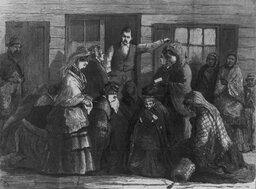Not everyone in Western New York in the late 1800s was a fan of the drink. Fredonia’s Women’s Temperance Union took a stand against alcohol in December 1873, successfully closing many drinking establishments and laying the roots for the national W.C.T.U..
Fighting the Demon Drink in Fredonia: The Women’s Temperance Crusade
The full content is available in the Winter 2015 Issue, or online with the purchase of:
If you have already purchased the product above, you can Sign In to access it.
Related Content










